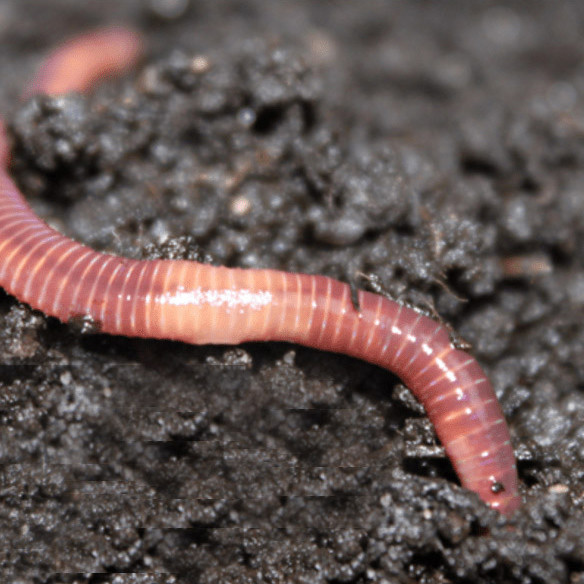The Role of Red Wigglers in Lasting Horticulture
The integration of red wigglers right into sustainable gardening techniques offers a compelling method to improving dirt wellness and minimizing natural waste. The implications of utilizing red wigglers prolong past mere composting; their function in forming a much more sustainable future warrants a much deeper exploration of their advantages and useful applications.
Comprehending Red Wigglers
Red wigglers, clinically known as Eisenia fetida, are a species of earthworm renowned for their duty in lasting horticulture and composting methods - red wigglers. These worms flourish in breaking down raw material, making them particularly effective in converting kitchen scraps and lawn waste right into nutrient-rich compost. Unlike conventional earthworms, red wigglers have a greater resistance for varying wetness degrees and can thrive in environments with plentiful natural product
The habitat preferences of red wigglers include wet, dark atmospheres rich in natural material, such as compost bins or worm ranches. Their eco-friendly function extends past composting; they are essential in freshening the soil and helping with nutrition biking, which eventually contributes to much healthier garden ecosystems. red wigglers. Recognizing the biology and behavior of red wigglers is crucial for those seeking to apply efficient vermicomposting in sustainable horticulture
Benefits of Vermicomposting
Vermicomposting deals various benefits that improve lasting gardening techniques and add to ecological health. Among the main advantages is the transformation of organic waste into nutrient-rich garden compost, which enhances soil framework and fertility. The spreadings produced by red wigglers are loaded with valuable microbes and necessary nutrients, making them a superb all-natural plant food.
In addition, vermicomposting dramatically reduces landfill waste. By diverting cooking area scraps and backyard waste from land fills, this method not just decreases methane discharges-- a potent greenhouse gas-- yet likewise advertises a circular economic situation, where waste is repurposed as a source.
Another advantage is the enhancement of soil oygenation and drain (red wigglers). The burrowing task of red wigglers develops networks in the soil, enabling air and water to penetrate even more easily, therefore promoting a much healthier root system for plants
In addition, vermicomposting can be done on a tiny range, making it easily accessible for city garden enthusiasts and those with limited space. This approach motivates environmental stewardship and understanding, as individuals become a lot more engaged with their waste monitoring methods. Inevitably, vermicomposting stands for a lasting, effective, and environment-friendly approach to horticulture that profits both plants and the planet.
Just How to Beginning Vermicomposting
Beginning your very own vermicomposting system can be a rewarding venture that boosts your lasting gardening methods. To start, choose a suitable container, such as a plastic container or wooden box, with great water drainage and ventilation. The size will certainly depend upon the volume of kitchen scraps you produce; a container of 10-14 gallons usually is sufficient for a household.
Next, prepare the bed linens material. Shredded paper, cardboard, and coconut coir are exceptional choices, supplying a comfortable habitat for the red wigglers. Go for a bed linen deepness of about 4-6 inches, which need to be damp however not soaked.
As soon as the bed linens is established, present your worms. Red wigglers (Eisenia fetida) are one of the most appropriate for composting. Start with around one pound of worms for every single 2-3 pounds of kitchen area scraps weekly.
Begin including kitchen area waste, staying clear of meat, dairy products, and oily foods, as these can draw in bugs and develop smells. Frequently check the container's dampness degrees and temperature, guaranteeing it stays within the suitable variety for worm activity. With these preliminary steps, you'll be well on your way to developing nutrient-rich garden compost for your yard.
Maintaining a Healthy And Balanced Worm Bin
A prospering worm bin needs regular care and focus to maintain an optimal setting for the red wigglers. Key factors to keep track of include moisture levels, temperature level, and food supply. Keeping a wetness level comparable to a wrung-out sponge is crucial; way too much water can cause anaerobic problems, while too little can dehydrate the worms.
Temperature level is likewise important, as red wigglers grow in a series of 55 to 77 degrees Fahrenheit. Extreme temperature levels can emphasize the worms, potentially leading to mortality. Putting the bin in a climate-controlled area or using insulating products can assist control temperature fluctuations.

Finally, aeration is essential. On a regular basis turning the bed linens and utilizing a fork or shovel can prevent compaction and advertise airflow, guaranteeing a healthy and balanced, successful environment for the red wigglers. By sticking to these practices, garden enthusiasts can maintain an effective worm bin that sustains sustainable horticulture efforts.
Effect On Dirt Health
Enhancing dirt wellness with the usage of red wigglers is an essential facet of sustainable horticulture. These worms, recognized clinically as Eisenia fetida, play an important duty in improving dirt framework and fertility. By consuming raw material, red wigglers break down complicated products into less complex compounds, a process recognized as vermicomposting. The end product, worm spreadings, is abundant in important nutrients, consisting of nitrogen, phosphorus, and potassium, which are essential for plant growth.


Conclusion
To conclude, red wigglers considerably contribute to sustainable gardening through their effective vermicomposting techniques. Their ability to transform natural waste right into nutrient-rich Website compost enhances dirt fertility and sustains a varied microbial environment. Moreover, their burrowing activity improves dirt oygenation and water retention, benefiting plant health. By promoting waste reduction and cultivating a round economy, red wigglers emerge as crucial parts in environment-friendly gardening initiatives, emphasizing their important role in ecological sustainability.
Comments on “Happy red wigglers: Where to buy”